
A review of Genevieve Kuzak’s Butch Boy Fantasy at What Pipeline
Marissa Jezak
January 12, 2023

Historically, the term “butch” has been used to refer to a person whose gender performance encompasses traditionally “masculine” qualities. But as time passes, what we comprehend as common archetypal notions of “masculinity” and “femininity” are continually expanding, evolving, and melting into one other. Gender is often interpreted as a social construction—in the sense that our environments and the people in them influence us to take on certain social roles through our behaviors & style. From the moment we are born, our identities are molded by what surrounds us, and we are categorized somewhere on this continuum. In his solo exhibition Butch Boy Fantasy at What Pipeline, Detroit, Genevieve Kuzak’s photographs and video position the viewer as spectator in a diary of intimate portraits exploring the intricacies and flux of gender and human sexuality.
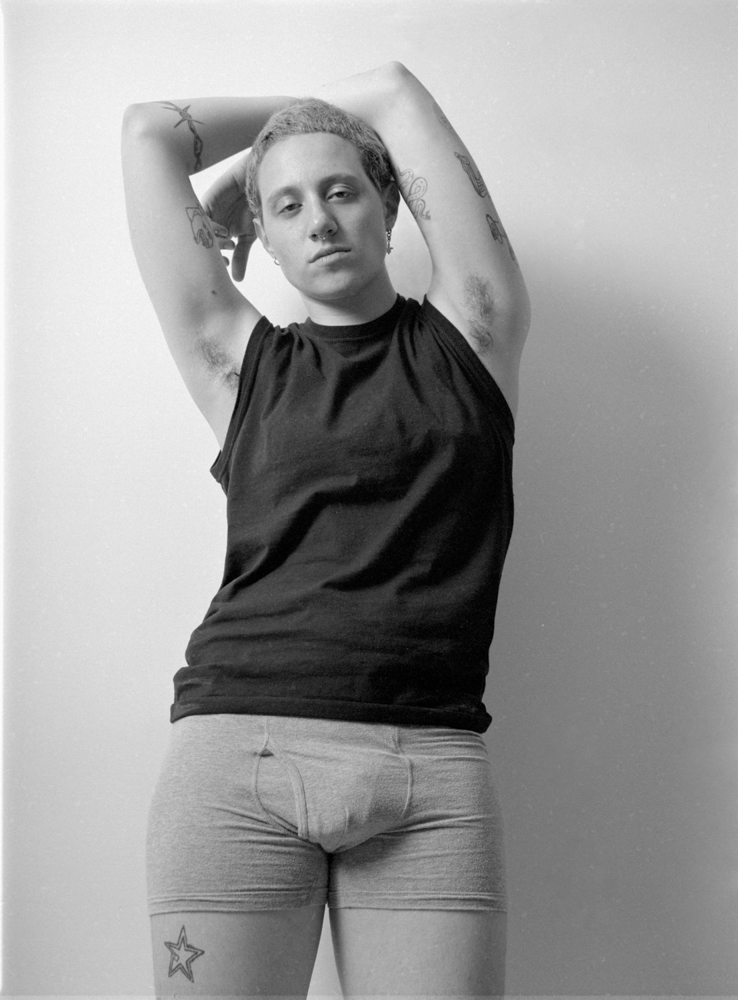
On the walls of the gallery are seven framed photographs, evenly spaced in a calm, serene atmosphere. Using materials like expired film and an old digital camcorder, the artist has portrayed several people, some casually posed and others acting out everyday tasks. The domestic environments and lack of clothing in the images emanate a strong feeling of intimacy. Overall the subjects seem uninhibited, trusting.
For example, Bulge shows a person in black and white, their gaze pointed directly at the camera. The image has been blown up so the film grain is visible, and we are confronted with them at eye-level. By their pose, they seem confident and relaxed, arms resting behind their head as the frame draws attention to their groin. While the focus is on the subject’s crotch, a dark T-shirt conceals their upper torso, creating a sense of ambiguity, leaving the viewer to imagine the body hidden beneath. Similarly, in Take You From Behind, a mysterious subject glances back at the lens while undressing. The title supports the highly sexual energy of the photo, suggesting aggression and lust. Bathed in shadows of blue, the anonymous lover approaches, gaze disguised.
It can be inferred from the text in the press release that these photographic images act as elements in fulfilling the artist’s fantasy, while exposing unconscious desires. According to Lacan, it is through our fantasies that we learn how to desire—because fantasy doesn’t correspond to the real, our desires must rely on lack, and the object of desire or “objet petit a” helps us establish these coordinates. Additionally, his theory states:
“At the heart of desire is [...] nothing but a screen for our own narcissistic projections. It is that lack [...] that ensures we continue to desire. To come too close to our object of desire threatens to uncover the lack that is, in fact, necessary for our desire to persist, so that, ultimately, desire is most interested not in fully attaining the object of desire but in keeping our distance, thus allowing desire to persist. Because desire is articulated through fantasy, it is driven to some extent by its own impossibility.”1
From the viewer’s perspective, it is clear to see how Butch Boy Fantasy flirtatiously pushes at the borders of desire, without letting us get too close. The stillness of the print and the screen that holds the moving image serve as barriers between us and the objet petit a, maintaining an alluring distance.
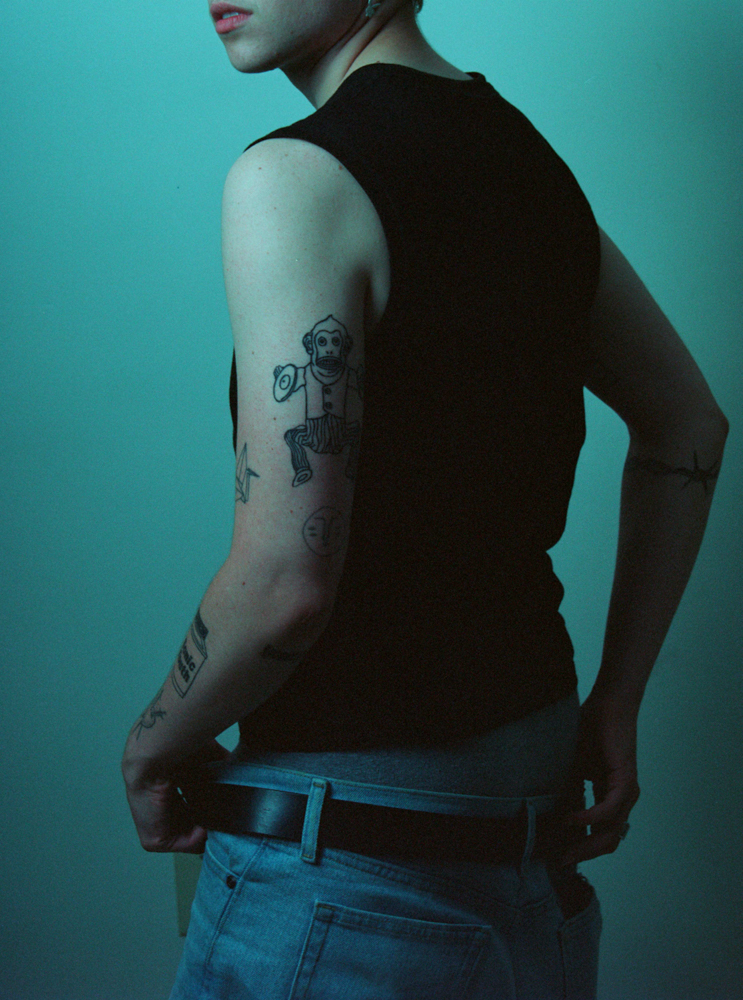
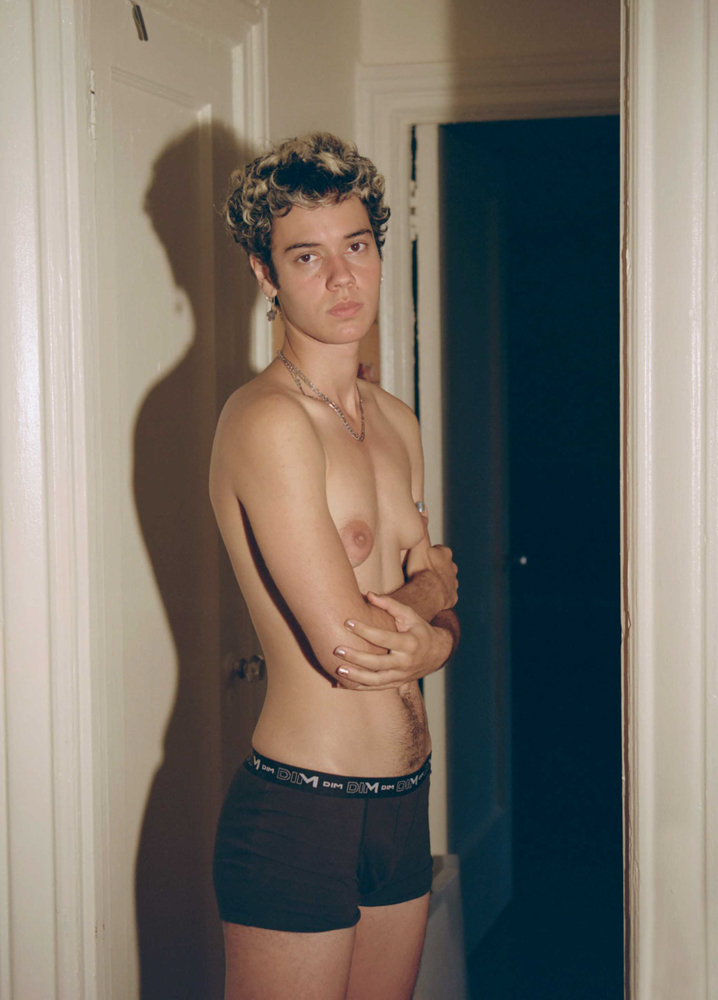
In I Was Waitin for You, harsh flash illuminates the subject as they stare into the camera, arms crossed in a protective gesture over their uncovered skin. The same individual appears again in Paris Pissing, head tilted down, sitting on the toilet. Characteristics such as the low, ambient lighting and 90s camcorder quality give the shot a raw documentary feel, while dewdrops on the shower curtain allude to wetness—secretions of the body. The installation as a whole embodies a particular sensuality—softness. Furthermore, the subjects in the show are depicted in a way that highlights the complexity of the body as both a sexual object and a site of political controversy.
In a separate room at the back of the gallery, a projected video displays the text:
“All my boys live on the computer
a hole in the universe
My blood-sucking creature
His body and my fingers
To feel you dream demon”

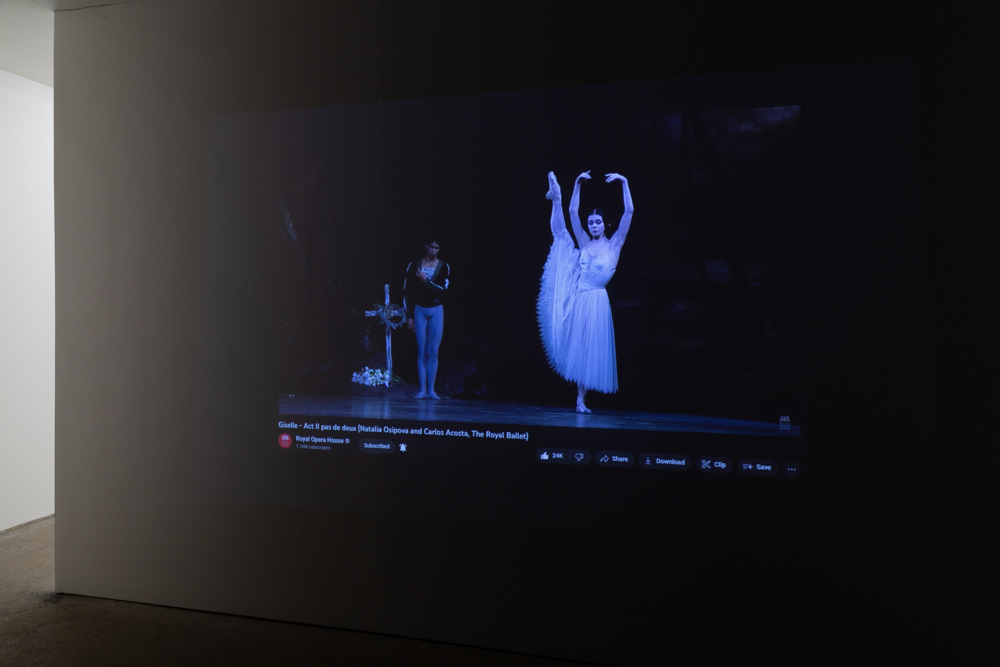
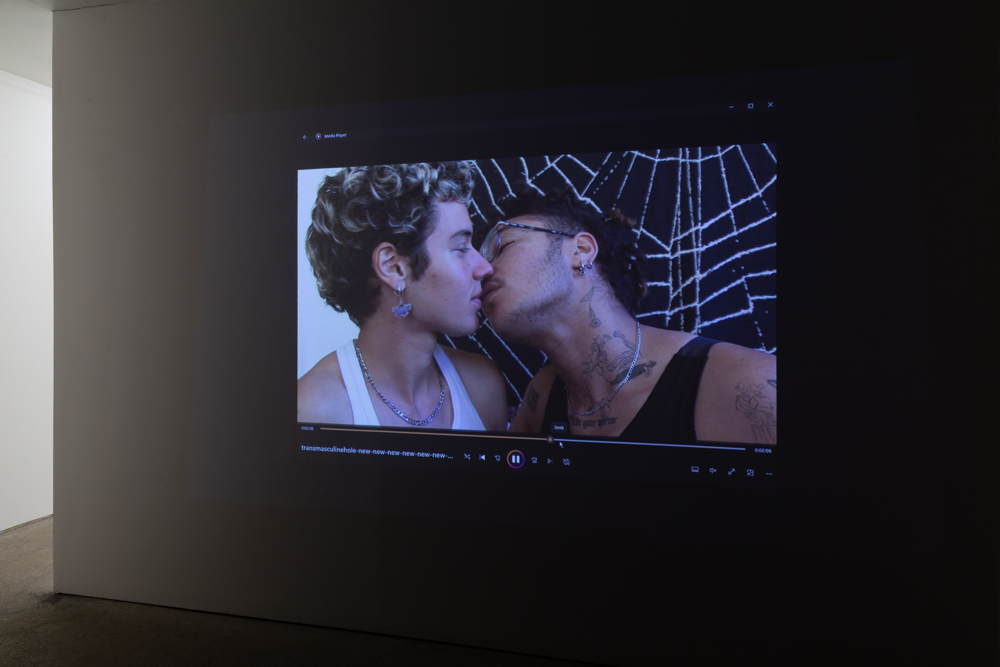
The print-screen recording reveals the actions of the artist as he edits; the mouse can be seen moving below, fast-forwarding through footage of two people making out. Paris, on the left is fully nude, gently touching themselves in an erotic way. Glitches obstruct the picture, and then the screen turns black, and switches to a performance of the ballet Giselle, with the frame rate altered to appear as if in slow motion. The explicit content of the video reads as pornographic, but the poetic interludes make it feel more like a peek inside the artist’s diary—his journal of desires. It raises the topic of censorship, and the regulation of queer bodies. Additionally, the style and dominant presence of the figures in the exhibition could be classified as traditionally “masculine” attributes. At the same time, the delicate sensuality of the works is demonstrative of the concept of “femininity”, displaying a cool and graceful passivity. In presenting the duality of these often dichotomized traits, the artist challenges notions of heteronormativity as well as both “feminine” and “masculine” stereotypes.
Undoubtedly, ingrained in our society and media are ideas of heterosexism that cater to a conservative and patriarchal elite class. We are exposed to revealing, sexualized images of the cisgender female body all day long, but never men, and especially not trans men. The imagery in Butch Boy Fantasy normalizes the trans body and sexual ambiguity associated with non-binary people. Moreover, it creates a space for the viewer to empathize with the butch identity, giving visibility to this specific subsection of people who are rarely represented in popular media, while encouraging a deeper discussion around sexuality and desire. In a volatile era of disconnect, Kuzak’s up-close and personal photography redirects us to closeness and unapologetically affirms the expression of non-heteronormative gender identities, specifically that of the transmasculine-butch.
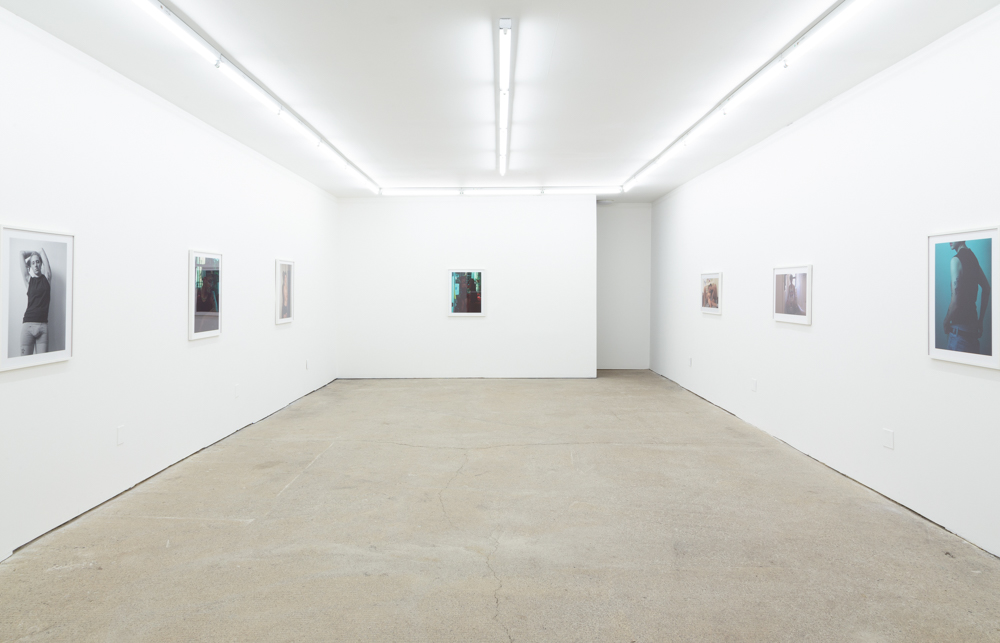
Full documentation available at: http://whatpipeline.com
1 Dino Felluga, “Modules on Lacan: On Desire,” Introductory Guide to Critical Theory. Updated Jan.31, 2011. Purdue U. Link.